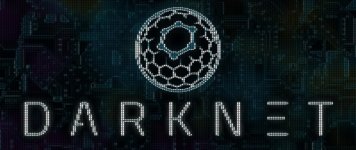Fixxx
Moderator
- Joined
- Aug 21, 2024
- Messages
- 669
- Reaction score
- 3,328
- Points
- 93

Introduction
In various situations, the term "Darknet" is viewed either as anonymous networks, secure systems, or sometimes as neither anonymous nor secure, encompassing numerous contradictions as a result of blurred terminologies. For instance, "Darknet" can refer to friend-to-friend networks designed for file sharing, RetroShare, GNUnet, FreeNet (client-safe) applications, Tor, I2P (anonymous) networks, Proxy and VPN services (whose quality of anonymity falls short of hidden networks), social networks with uniquely configured communication protocols (whatever that may mean), TON (which is a cryptocurrency and one of the variations of Web3, leading to the question of whether Bitcoin and Ethereum should also be considered "Darknet" systems?), Telegram (a centralized communication service with a potentially ambiguous end-to-end encryption option, suggesting that WhatsApp could also be a "Darknet"?), BitTorrent (a protocol that doesn't provide anonymity for subjects or confidentiality for objects) and so on. This list could continue and be supplemented with dozens of diverse technologies.
Searching for Contradictions
Literature indicates that "Darknet" can literally refer to anything associated with the concealment of information or identity from global observers (whether they be states or monopolistic corporations), regardless of the means of achieving such concealment. This assertion leads to the following contradictions.
- If no distinction is made between non-indexable password-protected pages on the Internet and the hidden Tor network, it effectively denies the anonymity of the "Darknet" due to the secondary and insignificant nature of its convoluted routing (as the main criterion for network anonymity). Nevertheless, in the terminology of "Darknet", anonymity is considered one of the fundamental characteristics inherent to this system, which undoubtedly presents a contradiction.
- If we assume that anonymity refers to the security of transmitted objects, where it's impossible to know what exactly is being transmitted, in other words, understanding "Darknet" as client-safe applications with confidentiality characteristics, this contradicts "Darknet" systems associated with non-indexable password-protected pages on the Internet, belonging to the second stage of anonymity, characterized by pseudo-anonymity and a lack of security for transmitted/stored information. In other words, this outcome represents the worst expression of "Darknet" networks (in terms of anonymity and security), where the power of anonymity and the power of trust become equal |A| = 1, |T| > 1.
Second Stage of Anonymity
Centralized or hierarchical systems, where control over information is exercised through centralized mechanisms.
Power of Anonymity
The power of anonymity refers to the number of nodes arranged in a chain participating in the routing of information from sender to receiver, while not being connected by common goals and interests. It follows that a multi-tier architecture by default has a power of anonymity |A| = 1 (regardless of the number of servers). Zero power of anonymity |A| = 0 arises when there are direct connections between subjects (in other words, in the absence of any routing). For example, if R = {A, B, C} is the set of nodes participating in routing and the subset {A, B} belongs to R - cooperating nodes, then Q(R) = [{A, B}, {C}] and, consequently, |A| = |Q(R)| = 2. The term power of anonymity |A| is derived from the term anonymity set A, implying an R number of subjects capable of performing actions in the system for a given transaction. Unlike the anonymity set, the power of anonymity imposes an additional restriction, where nodes that are colluding are counted as a single node.
Power of Trust
The power of trust refers to the number of nodes involved in storing or transmitting information, presented in an open description. In other words, such nodes are capable of reading, substituting, and modifying information, as it's in a completely clear, transparent state for them. The greater the power of trust, the higher the presumed chance of compromising individual nodes, and consequently, the information stored on them. It's customary to consider one of the nodes as the recipient. Thus, zero power of trust |T| = 0 arises only in moments of absence of any connections. If |T| = 1, it indicates that the connection is secure; in other words, no one other than the sender and recipient possesses the information. In all other cases |T| > 1, indicating a group connection (i.e., the existence of multiple recipients) or intermediate nodes capable of reading information in an open form.
Conclusion
The term "Darknet" has undergone numerous layers of abstraction, redefinitions and assignments, which has made it more confusing than explanatory. The contradictions inherent in this term resemble those of "Web3", where it has become somewhat embarrassing to mention it due to the multitude of superficial definitions and narratives created around it. This article serves merely as a means to illustrate the "confusion" in the minds of those who use such terminology.

